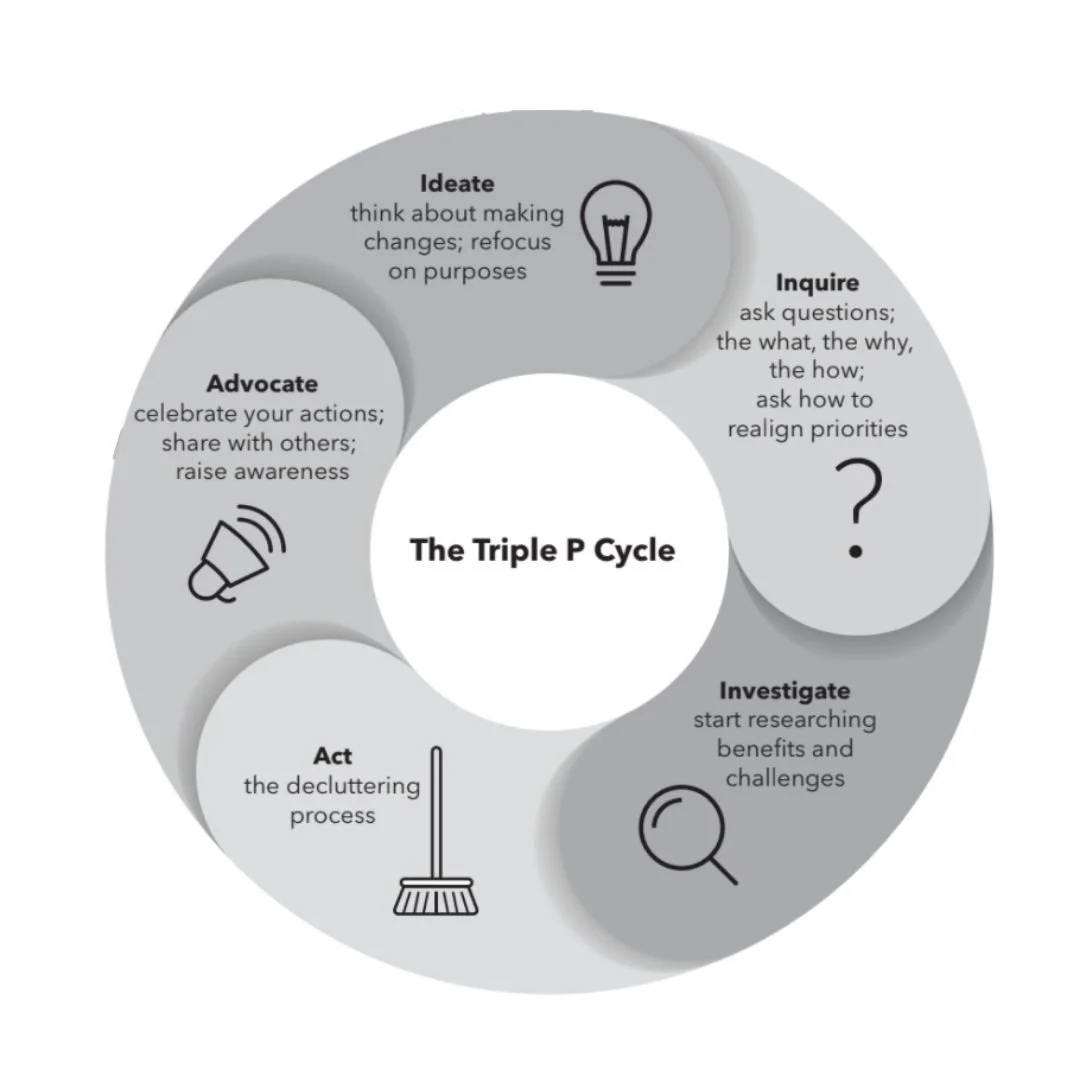Guest Blog: 3 Tips for Adopting a Minimalist Mindset
About a year and a half ago I met an amazing educational consultant who is passionate and knowledgeable about coaching, student advocacy and minimalism in education. Tammy Musiowsky-Borneman is the founder of Plan Z Professional Learning Services. I asked Tammy to share her top three tips for adopting a minimalist mindset in education and I’m so excited for you to read what Tammy and her co-author of The Minimalist Teacher, C.Y. Arnold, came up with!
Three Tips for Adopting a Minimalist Mindset
by Tamera Musiowsky-Borneman and C.Y. Arnold
Educators can make up to 1,500 decisions per day. Adopting a minimalist mindset in education means that we are working towards keeping our minds clutter-free. For our minds to remain in optimal problem-solving and decision-making shape, we must have some strategies in place for clearing out what’s irrelevant, to make way for the tasks in our proximal priority zone.
If you are someone who can easily and quickly navigate working through a list of tasks, keep tuned into what’s most important at the right times, and maintain a clear line of focus most of the time, you’re already on the right track. If you are someone who needs reminders and a consistent flow of ways to keep yourself sorted out, we’ve got some ideas for you.
Here are three tips for adopting a minimalist mindset:
1. Find your entry point into the process.
We love a process, and bringing principles of minimalism into your life is just that. It is a journey, wherein you keep moving through the cycle repeatedly over time. You just need to find your entry point. Ask yourself a few reflective questions: Do I need to learn about minimalism? Do I need to transfer minimalism into more domains of my life? Do I need to declutter to bring more calm into my physical and mental space? Do I need to consider my curriculum and teaching to refocus on making a positive impact on my students? In ‘The Minimalist Teacher’, we present readers with the Triple P Cycle as a place to anchor into the process. Any step in the cycle can be your starting point, depending on your needs.
Do you need to:
Ideate,
Inquire,
Investigate,
Act, or
Advocate?
A brief statement about each is in the figure below. From here, you can choose the step that feels right for you.
2. Navigate towards your priorities
Teachers have a lot on their plates and the majority of the work that we do is important, serious work that affects the well-being and growth of our learners. This makes it understandable that oftentimes, teachers are feeling overwhelmed and sacrificing significant time outside of school hours to ensure that tasks get done. Choosing which of these tasks is a priority, when they all feel like a priority, is a difficult challenge!
In our book, we include a tool that can help you navigate towards your priorities in order to make decision-making easier. Many of the teachers we have worked with have shared how helpful they have found this tool. They have even expressed how they are now using this tool beyond the teaching tasks, transferring it into the rest of their lives. The tool is the Urgent/Important Matrix shown below.
When considering the different tasks you have in front of you, you can place them into one of the categories depending on how urgent and important they are to you right now. You may want to do this with the everyday items on your to-do list, or it could be greater tasks or problems you're tackling. Once you have sorted the items in question, here’s how to navigate through:
Those that fall into the Urgent and Important Category: these are your highest priority right now. You should take immediate action to work towards completing these tasks.
Those that fall into either the Important/Not So Urgent: or the Urgent/Not So Important category: these items are not your main priority right now, but you should start thinking about a plan or timeline to get them done.
Those that fall into Not So Urgent/Not So Important category: these are not a priority right now and can wait until a later date.
Once you have completed this process, you will begin to form a clear picture of where your priorities are right now, and where you can focus your time and attention. These categories may change over time, but at each point that you choose to engage with this tool, you will walk away knowing what needs your attention at that point of time.
3. There isn’t only one version of minimalism:
Keep in mind that while minimalism in popular culture may be seen as working towards a decluttered space, in education, it may appear and be utilized in a multitude of ways. The aim of minimalism is to seek out time, focus, and space for the things in our lives that have meaning and purpose to us. In our work as educators, this may manifest as focusing our time on teaching strategies that are most impactful on learning, ensuring the strong relationships in your classroom are maintained, or investing time in building collaborative partnerships with colleagues. Or, it may indeed be working towards having a decluttered classroom space to work in. Wherever you are in the cycle, whatever priorities are uppermost to you right now, that is a great place to start! Engaging with minimalism may well aid you in carving out space in your life to meet that purpose and be left feeling more calm, effective, and fulfilled.
Take our quiz to help you pinpoint a priority.
If you know that time management is an issue for you, we’d like to hear about that. Take our survey.
To learn more about our Triple P decision-making framework, find our book at Amazon.com, and find out about our events on MinimalistTeacherBook.com.



